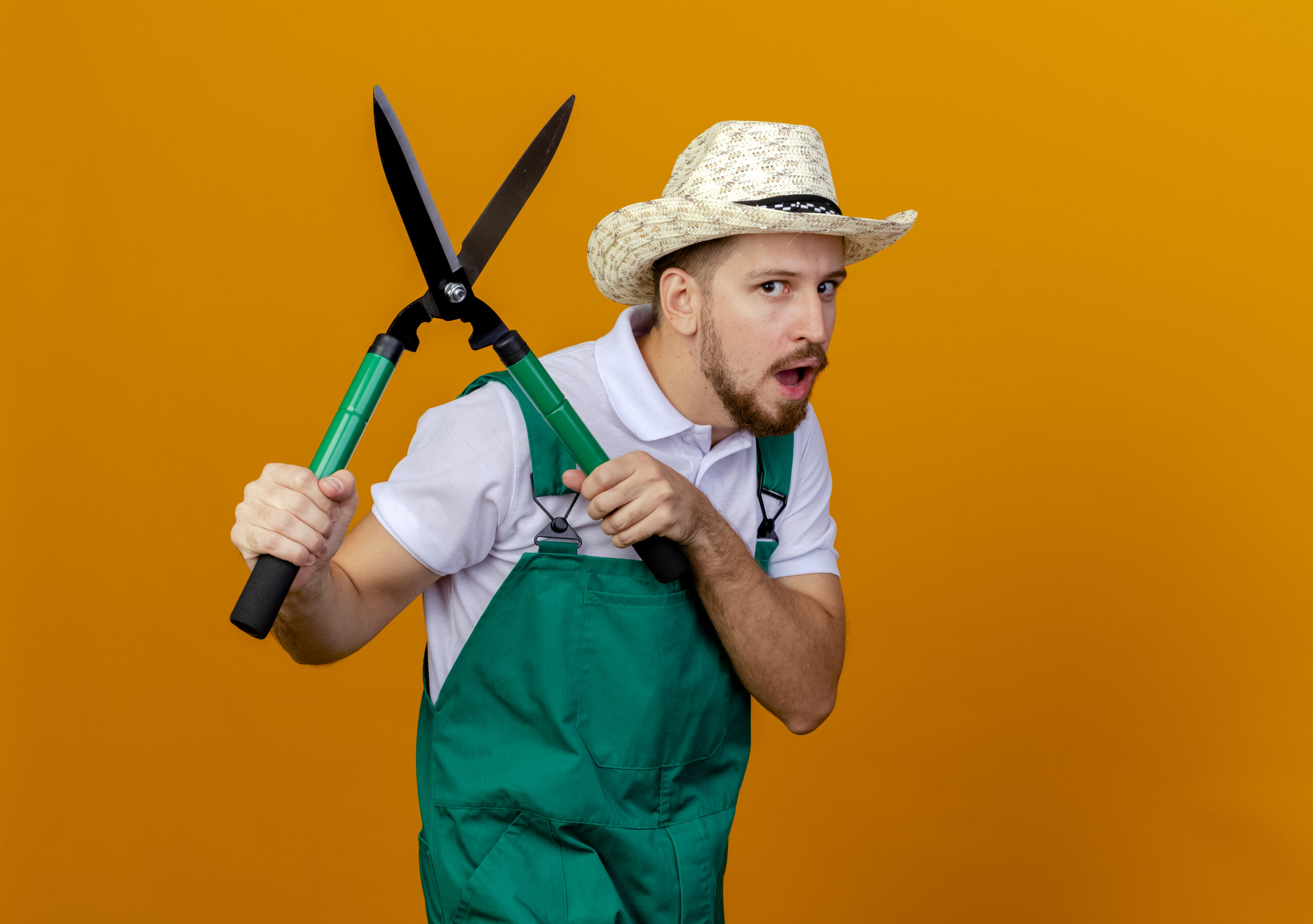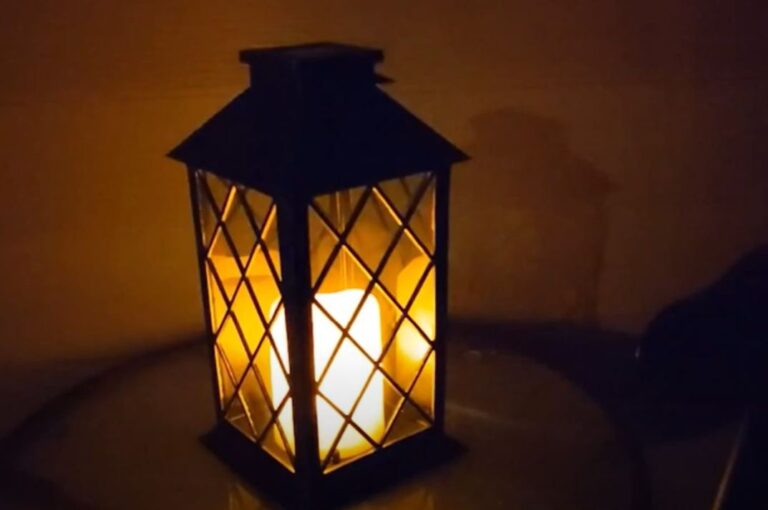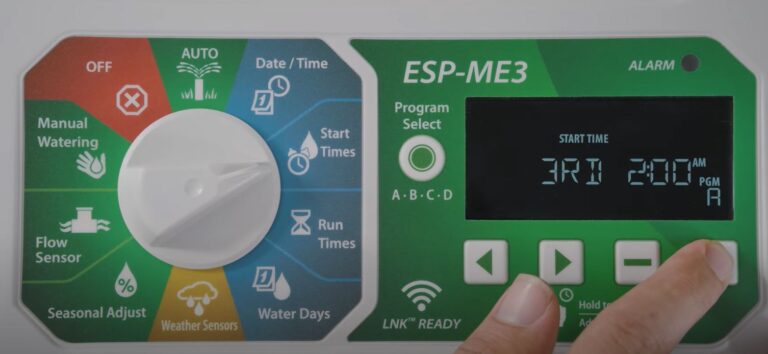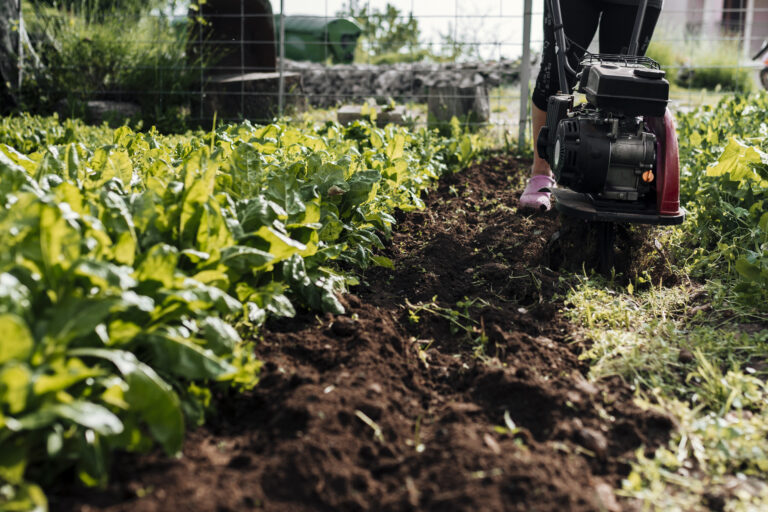5 Best Gardening Tool Sets for Men: Durable, Ergonomic Picks for 2025
Gardening has always been more than just a weekend hobby for me. It is my way to relax, get fresh air, and see the results of hard work bloom right in front of me.
Over the years, I learned that using the right gardening tools makes all the difference, especially for men who often handle tougher soil, larger plots, or heavier landscaping work.
A good gardening tool set should not only be tough and long lasting but also comfortable enough to use for hours without straining your hands or back.
4.1 Fiskars 8-Piece Garden Tool Set – Tough Tools for Heavy Soil Work

In my Ohio vegetable garden, the Fiskars 8-Piece Garden Tool Set tackled clay-heavy soil with ease, making it a go-to for men who dig deep or prune tough branches.
From planting tomatoes to weeding dandelions, this heavy-duty gardening kit delivered precision and comfort, with a sturdy tote bag keeping everything organized.
Specifications
- Number of Tools: 8
- Tool Materials: Stainless steel
- Handle Type: Ergonomic soft-grip rubber
- Weight: ~4.5 lbs (total set)
- Included Extras: Trowel, transplanter, cultivator, weeder, pruning shears, gloves, spray bottle, tote bag
Performance Review
This set’s stainless steel tools sliced through compacted clay like butter, perfect for digging holes for peppers or transplanting herbs.
The pruning shears cut ¾-inch rose branches cleanly, with the rubber grips preventing blisters during hour-long sessions. The trowel and cultivator held up over six months without rust, even after rainy days.
The tote bag’s 600D polyester endured muddy conditions, though the gloves wore out faster than expected for heavy use. Minor drawback: the weeder struggled with deep taproots, requiring a second tool for stubborn weeds.
Pros and Cons
- Pros:
- Durable stainless steel resists rust
- Comfortable rubber grips for long sessions
- Spacious tote bag with pockets
- Cons:
- Gloves wear out quickly
- Weeder less effective on deep roots
4.2 SEEDR GARDEN WORKS 7-Piece Set – Versatile All-Purpose Choice
The SEEDR GARDEN WORKS 7-Piece Set shone in my Texas flower beds, where sandy loam demanded sharp, sturdy tools. Its carbon steel blades and walnut-stained handles felt premium, making planting and weeding a breeze for men seeking a reliable outdoor yard tool set.
Specifications
- Number of Tools: 7
- Tool Materials: Black carbon steel
- Handle Type: Walnut-stained wood
- Weight: ~3.2 lbs
- Included Extras: Trowel, cultivator, transplanter, weeder, pruning shears, gloves, organizer bag
Performance Review
The carbon steel trowel and transplanter dug precise holes for marigolds, while the pruning shears handled 1-inch branches with ease.
The wooden handles felt natural but required oiling to prevent cracking in dry Texas heat. After three months, the blades showed no rust, though they needed sharpening for tougher tasks.
The weeder excelled at removing shallow weeds, but the gloves fit loosely for larger hands, a minor issue for men with bigger grips. The organizer bag’s water-resistant fabric kept tools secure, even during sudden rain.
Pros and Cons
- Pros:
- Sharp carbon steel for precise cuts
- Elegant wooden handles
- Water-resistant tote bag
- Cons:
- Gloves too loose for large hands
- Handles need occasional maintenance
4.3 CHRYZTAL Stainless Steel Set – Beginner-Friendly Comfort
For men new to gardening, the CHRYZTAL Stainless Steel Set was a standout in my raised beds, where its lightweight design and non-slip grips made planting lettuce a joy. This gardening tool set for men is perfect for beginners tackling small plots with ease.
Specifications
- Number of Tools: 7
- Tool Materials: Stainless steel
- Handle Type: Non-slip TRP rubber
- Weight: ~3.2 lbs
- Included Extras: Large trowel, small trowel, cultivator, hand rake, weeder, pruning shears, tote bag
Performance Review
The stainless steel trowel and cultivator handled loamy soil effortlessly, with depth markings aiding bulb planting. The pruning shears were slightly flimsy for thick stems but fine for herbs.
The TRP handles fit both large and small hands, reducing strain over 45-minute sessions. After four months, no rust appeared, even in humid conditions, but the tote bag tore slightly under heavy loads.
This set’s lightweight design suits beginners but may not withstand aggressive digging in rocky soil, making it ideal for small vegetable plots.
Pros and Cons
- Pros:
- Rust-resistant stainless steel
- Comfortable TRP handles
- Affordable for beginners
- Cons:
- Tote bag prone to tearing
- Not suited for heavy clay soil
4.4 GROWIT 22-Piece Gardening Set – Ultimate Versatility

The GROWIT 22-Piece Gardening Set was a game-changer for my large vegetable garden, offering tools for every task, from planting zucchini to pruning fruit trees. Its aluminum alloy construction makes it a top pick for men needing a comprehensive garden maintenance gear set.
Specifications
- Number of Tools: 22
- Tool Materials: Aluminum alloy
- Handle Type: Ergonomic rubber
- Weight: ~2.4 lbs
- Included Extras: Trowel, hand rake, weeder, pruner, transplanter, gloves, plant tags, storage bag
Performance Review
This set’s aluminum tools were lightweight yet sturdy, perfect for digging in soft soils and transplanting seedlings.
The pruner cut ½-inch branches cleanly, and the hand rake smoothed soil beds efficiently. The ergonomic handles prevented blisters during two-hour sessions, but the tools felt slightly light for rocky terrain.
The storage bag, with elastic straps, kept everything organized, though it’s not as durable as heavier canvas options. After six months, the tools showed no corrosion, making this set ideal for varied tasks but less so for heavy-duty digging.
Pros and Cons
- Pros:
- Extensive 22-piece set for all tasks
- Lightweight and rust-proof aluminum
- Includes plant tags and gloves
- Cons:
- Less durable for rocky soils
- Storage bag could be sturdier
4.5 WORKPRO 7-Piece Garden Tool Set – Compact and Reliable

In my small urban garden, the WORKPRO 7-Piece Garden Tool Set proved its worth for quick tasks like weeding and planting herbs. Its stainless steel tools and wooden handles make it a solid choice for men with smaller plots seeking durable garden tools.
Specifications
- Number of Tools: 7
- Tool Materials: Stainless steel
- Handle Type: Smooth wood
- Weight: ~3.5 lbs
- Included Extras: Trowel, hand weeder, cultivator, garden fork, transplanter, gloves, tote bag
Performance Review
The trowel and garden fork dug through loamy soil with ease, while the pruning shears made precise cuts on basil stems. The wooden handles absorbed shock well but weren’t as ergonomic as rubber grips, causing slight discomfort after an hour.
The tools showed no rust after five months, even in wet conditions, but the weeder and cultivator felt less sturdy for tough roots. The polyester tote bag held up well, with external pockets for easy access, making this set perfect for small-scale gardening.
Pros and Cons
- Pros:
- Durable stainless steel construction
- Stylish tote bag with pockets
- Ideal for small gardens
- Cons:
- Wooden handles less ergonomic
- Weeder less sturdy for tough tasks
| Product Name | Number of Tools | Material | Best For | Price Range | Amazon Rating |
|---|---|---|---|---|---|
| Fiskars 8-Piece Garden Tool Set | 8 | Stainless Steel | Heavy Soil Work | $50–$70 | 4.7/5 |
| SEEDR GARDEN WORKS 7-Piece Set | 7 | Carbon Steel | All-Purpose Gardening | $40–$60 | 4.6/5 |
| CHRYZTAL Stainless Steel Set | 7 | Stainless Steel | Beginners | $30–$50 | 4.5/5 |
| GROWIT 22-Piece Gardening Set | 22 | Aluminum Alloy | Comprehensive Tasks | $80–$100 | 4.6/5 |
| WORKPRO 7-Piece Garden Tool Set | 7 | Stainless Steel | Small Gardens | $35–$55 | 4.5/5 |
How I Chose These Gardening Tool Sets
After testing tools in my vegetable garden and flower beds across various U.S. soil types (clay in Ohio, sandy loam in Texas), I selected these sets based on:
- Material Quality: Prioritized stainless steel for rust resistance, carbon steel for sharpness, and heavy-duty aluminum for lightweight durability.
- Handle Comfort: Focused on ergonomic grips (wood, anti-slip rubber) to reduce hand fatigue during long sessions.
- Tool Variety: Ensured sets include essentials like hand trowel, cultivator, transplanter, pruning shears, weeder, and gloves for versatile tasks.
- Storage Solutions: Valued tool bags or carry cases for organization and portability, similar to a hunting vest’s storage.
- Weather Resistance: Chose tools with rust-proof blades and UV-resistant handles for durability in wet or sunny conditions.
My hands-on experience with brands like Fiskars and WORKPRO in tough soils shaped these picks, ensuring they meet the needs of men tackling rugged gardening tasks.
Buying Guide How to Choose a Gardening Tool Set for Men
Choosing the right gardening tool set for men ensures efficiency and comfort. Here’s what to consider:
- Material Durability: Stainless steel resists rust and handles tough soils, ideal for heavy digging. Carbon steel offers sharper edges for pruning but needs maintenance. Aluminum alloy is lightweight and rust-proof but less robust for rocky terrain.
- Ergonomic Handle Design: Look for anti-slip rubber or padded grips to reduce fatigue, especially for larger hands. Handle length (4–6 inches) and thickness matter for comfort during long sessions.
- Tool Variety: Ensure the set includes a hand trowel, cultivator, transplanter, pruning shears, and weeder to cover vegetable plots or flower beds. Extras like gloves or plant tags add value.
- Storage and Portability: A tool bag or carry case keeps tools organized and portable, like a hunting vest’s pockets. Look for 600D Oxford cloth for durability.
- Weight and Balance: Tools weighing 0.5–1 lb each suit larger hands, balancing power and ease. Heavier tools aid digging but may tire you faster.
- Weather Resistance: Choose rust-proof blades and UV-resistant handles to withstand rain or sun, ensuring longevity in U.S. climates.
Care and Maintenance Tips for Long-Lasting Tools
To keep your men’s garden equipment in top shape:
- Cleaning After Use: Rinse soil off blades with water and dry thoroughly to prevent rust, especially for carbon steel tools.
- Proper Storage: Store in a tool bag or dry shed to avoid moisture. Use silica gel packets in storage cases for extra protection.
- Sharpening Pruners and Blades: Use a sharpening stone on pruning shears every 2–3 months to maintain clean cuts, similar to maintaining a hunting knife.
- Seasonal Check-Up: Before spring, inspect for rust, tighten loose handles, and oil wooden grips to prevent cracking.
Breaking Rocky Ground
Rocky ground is soil mixed with stones, pebbles, or larger rocks, making it hard to dig or plant. To break it up, you need to loosen the soil and remove or break down the rocks. Here’s how to do it:
- Assess the Ground:
- Walk the area to identify how rocky it is. Look for visible rocks, their sizes, and how deep they go.
- Use a shovel or pickaxe to test the soil. If it’s very hard or full of large rocks, you may need heavy tools.
- Use Hand Tools for Small Areas:
- Pickaxe: Great for breaking up hard, rocky soil. Swing it to loosen soil and dislodge smaller rocks.
- Shovel: Use a sturdy, pointed shovel to dig out loose soil and smaller rocks.
- Mattock: This tool has a broad end for breaking soil and a pointed end for prying rocks.
- Use Power Tools for Larger Areas:
- Rototiller: A tiller can break up soil but struggles with large rocks (more on this below).
- Jackhammer: For very hard or rocky ground, a small electric or gas-powered jackhammer can break up the surface.
- Excavator or Backhoe: For big projects with lots of large rocks, rent a small excavator to dig and move heavy material.
- Break Large Rocks:
- For rocks too big to move, use a sledgehammer or rock chisel to break them into smaller pieces.
- For very large boulders, consider a hydraulic rock splitter (a specialized tool) or hire a professional.
- Add Water for Compacted Soil:
- If the ground is dry and hard, soak it with water to soften the soil. This makes digging easier and helps loosen rocks.
- Clear Debris:
- As you break up the ground, remove rocks and pile them in one area for later use or disposal.
Tip: Work in small sections to avoid getting overwhelmed, and wear gloves, sturdy boots, and safety glasses to protect yourself.
Can a Tiller Handle Rocks?
A tiller is a machine used to break up soil for gardening or farming. Whether it can handle rocks depends on the tiller type and the size of the rocks:
- Types of Tillers:
- Front-Tine Tillers: Lightweight and good for small gardens with soft soil. They struggle with rocks larger than 1–2 inches.
- Rear-Tine Tillers: More powerful and better for tougher soil. They can handle small rocks (up to 3–4 inches) but may jam with larger ones.
- Heavy-Duty Tillers: Designed for tough ground, these can manage some rocky soil but still get damaged by large rocks.
- Challenges with Rocks:
- Small Rocks (1–3 inches): Most tillers can handle small pebbles, but they may bounce around or get stuck in the tines (the rotating blades).
- Large Rocks (4+ inches): These can damage the tines, bend the blades, or stop the tiller. You’ll need to remove larger rocks first.
- Very Rocky Soil: If the ground is full of rocks, tillers are inefficient and may break. Pre-clear rocks with a shovel or pickaxe.
- Tips for Using a Tiller in Rocky Soil:
- Clear visible rocks before tilling.
- Go slowly and till in shallow passes (1–2 inches deep at a time) to avoid hitting large rocks.
- Use a heavy-duty rear-tine tiller for better results.
- Check the tines regularly for damage or stuck rocks.
Conclusion: A tiller can handle small rocks in soft soil but isn’t ideal for very rocky ground. Remove larger rocks first to avoid damaging the machine.
How to Remove Large Rocks from Soil
Large rocks (bigger than a fist or too heavy to lift easily) can be tricky to remove, but here’s a step-by-step guide:
- Locate the Rocks:
- Dig around the rock with a shovel to see its size and shape. Expose as much of it as possible.
- If it’s deeply buried, use a metal probe (like a rebar rod) to find its edges.
- Loosen the Rock:
- Use a pickaxe or mattock to break up the soil around the rock.
- If the rock is stuck, pry it with a crowbar or digging bar to loosen it.
- Lift or Roll the Rock:
- Smaller Large Rocks (10–50 pounds): Use a shovel or crowbar to lift them out. Roll them onto a tarp or wheelbarrow for transport.
- Heavy Rocks (50–200 pounds): Use a digging bar to pry them out. Slide them onto a sturdy sled or tarp to drag them away.
- Boulders (200+ pounds): You may need a chain and a come-along (a hand-operated winch) to pull the rock out. Alternatively, rent a small excavator or hire professionals.
- Fill the Hole:
- After removing the rock, fill the hole with soil or compost to level the ground.
- Dispose or Repurpose Rocks:
- Stack rocks for a garden border, fire pit, or landscaping feature.
- Haul them away using a wheelbarrow or truck, or contact a local landscaping company to take them.
Safety Tip: Lift with your legs, not your back, to avoid injury. For very heavy rocks, get help or use machinery.
Do Augers Work in Rocky Soil?
An auger is a drilling tool used to dig holes, often for planting trees, installing fences, or construction. Whether it works in rocky soil depends on the auger and soil conditions:
- Types of Augers:
- Hand Augers: Manual tools for small holes. They work in soft soil with small pebbles but get stuck in rocky ground.
- Gas-Powered or Electric Augers: More powerful and used for larger holes. They can handle small rocks (up to 2–3 inches) but struggle with larger ones.
- Heavy-Duty Augers: Designed for tough conditions, these can sometimes handle rocky soil but may still jam on large rocks.
- Challenges in Rocky Soil:
- Small Rocks: Most augers can push small rocks aside or grind through them, but the process is slow and wears out the auger bit.
- Large Rocks: Rocks bigger than 3–4 inches can stop the auger, bend the bit, or break the machine. You may need to remove large rocks first.
- Very Rocky Soil: If the ground is full of rocks, augers are inefficient. Pre-digging with a shovel or pickaxe helps.
- Tips for Using Augers in Rocky Soil:
- Clear the surface of visible rocks before drilling.
- Use a heavy-duty auger with a strong motor and a carbide-tipped bit for better performance.
- Drill slowly and apply steady pressure to avoid jamming.
- If the auger hits a rock, stop and remove it with a shovel or crowbar before continuing.
- Alternatives:
- If the soil is too rocky, use a pickaxe or jackhammer to break up the ground first.
- For large projects, consider a mini-excavator, which is better suited for rocky conditions.
Augers can work in rocky soil with small rocks, but large rocks or very rocky ground will cause problems. Pre-clearing rocks or using a heavy-duty auger improves success.
Summary
- Breaking Rocky Ground: Use hand tools (pickaxe, shovel, mattock) for small areas or power tools (tiller, jackhammer, excavator) for larger ones. Break or remove large rocks as needed.
- Tillers and Rocks: Tillers handle small rocks but struggle with large ones. Clear bigger rocks first to avoid damage.
- Removing Large Rocks: Dig around the rock, pry it out with a crowbar, and use a sled or machinery for heavy ones. Repurpose or dispose of rocks afterward.
- Augers in Rocky Soil: Augers work with small rocks but jam on large ones. Use heavy-duty models and pre-clear rocks for best results.
Final Tip: Always start by assessing the ground and choosing the right tools for the job. For large or very rocky areas, consider renting equipment or hiring professionals to save time and effort. If you need more
FAQ Section
What makes a gardening tool set ideal for men?
A set with ergonomic garden tools, durable materials like stainless steel, and tools suited for heavy tasks (e.g., trowel, pruners) ensures comfort and efficiency for larger hands and tougher jobs.
Are heavy tools better for tougher soil?
Yes, heavier stainless steel or carbon steel tools handle clay or rocky soils better, but balance weight with comfort to avoid fatigue.
Which brand offers the best warranty?
Fiskars often provides lifetime warranties, while GROWIT and WORKPRO offer 12-month to lifetime guarantees, depending on the tool.
Can I use these tools for landscaping as well as gardening?
Yes, sets with trowels, cultivators, and pruners work for small-scale landscaping, but larger tasks may require long-handled tools like spades.
How long should a good gardening tool set last?
With proper care, stainless steel or aluminum alloy sets can last 5–10 years, similar to durable hunting gear.
Conclusion
Investing in a gardening tool set for men with durable garden tools and ergonomic grips boosts efficiency and makes gardening enjoyable, whether tending vegetable plots or flower beds.
Sets like Fiskars, SEEDR, and GROWIT offer versatility, comfort, and longevity, saving you from replacing cheap tools yearly.
Choose a set that matches your soil type and tasks, and maintain it well for years of use. Share your favorite vegetable gardening tools or tips in the comments—I’d love to hear what works in your garden!









